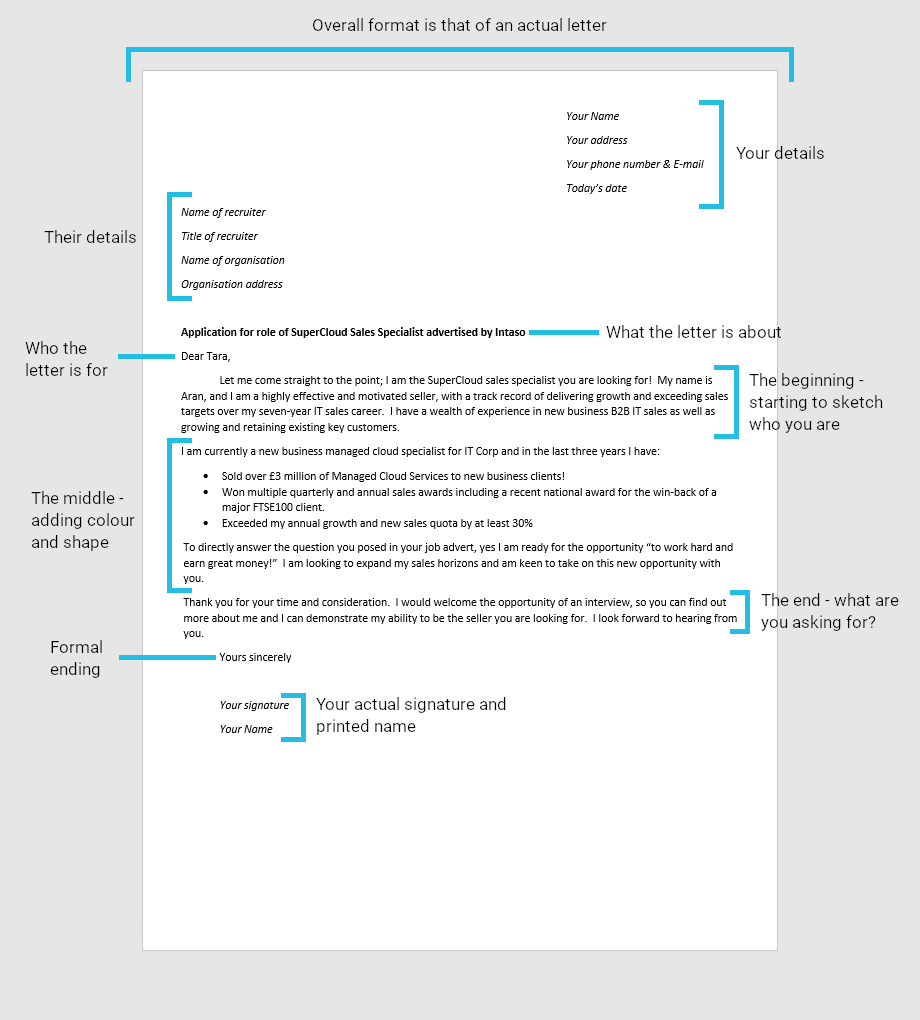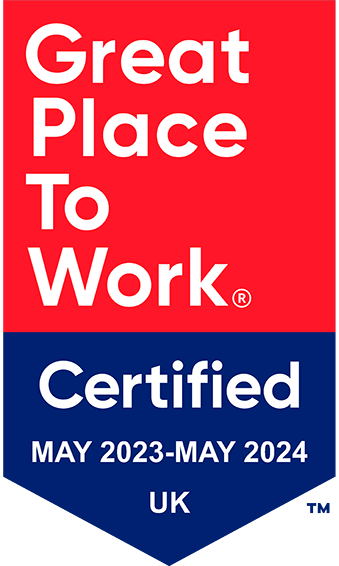In our previous article, Why your cover letter could be more important than your CV, we explained the importance of a tailored cover letter, so that Tara (the recruiting manager) would decide to give you an interview. In this article, we will explain how you can go about creating a great, personalised cover letter. One that will impress the recruiting manager and get you that interview.
Your cover letter is like a great novel, it needs to grab the reader in!
There are four parts to a great cover letter, and you need to nail each one. A great cover letter has a 4 parts:
Your cover letter should fit on one side of A4 (or the email equivalent!) The format of the letter needs to be appropriate for both the job and company you are applying for. The overall aim is to create a positive and memorable image of you in the eye of the recruiter and to get you into the ‘interview’ pile.

The beginning – starting to sketch who you are!
The first couple of sentences start to sketch out who you are and how you might fit into the values and culture of the organisation. It might be a passive; “I am writing to be considered for the role……and believe I have the skills and experience” or perhaps; “I have been a huge admirer of…… since I was a child, and the opportunity to work for you was too good to miss!”
You might reference where you saw the role advertised, or heard about the company; “I was avidly reading Cyber Security Weekly when I saw…..” or dive straight in with; “I have been passionate about…..” (although try not to be too clichéd!)
Whatever you decide to use, ask yourself what picture the person reading it is painting, and as importantly, is the person going to carry on reading your letter? A great first two lines should start to paint a memorable picture of you, and make the reader want to discover more.
The middle – adding colour and shape!
This is where you need to shine! Two or three sentences about who you are, what you can do and how you would fit into the culture of the organisation. One trick is to link the words used in the job advert. If they are “looking for someone with a passion for customer satisfaction” then you might think about saying; “I have been a passionate advocate for the highest level of client satisfaction in my previous roles as……”
Reflecting the words and tone of the original advert and then adding in colour about what you can bring as an individual, is a great way to build a positive image. It also helps where automated systems are being used to scan applications. Three or four key words, carefully reflected from the advert, can make all the difference.
Another great trick is to include an interesting non-work fact, something that links to a transferable skill and will get you remembered; “I have also been an athletics coach for over ten years, which has taught me a lot about motivating teams.” (This can additionally help the recruiters as an ice breaker for when you get the interview!)
The end – what are you asking for?
This is where you wind the story up. Be clear and polite. If your middle section has come to a natural end, great, if not think about adding something like; “In summary, I believe I have the skills and experience to fully meet the needs of your role” or “I hope this shows that I would make a valuable member of your team”. The words and tone need to reflect the picture you are painting of you.
Finally, end with a thank you and call to action; “Thank you for considering my application, please feel free to contact me if you require any more information. I very much look forward to hearing from you.”
You might even decide to ask for an interview, especially if it’s a sales related role; “I would welcome the opportunity to meet you at an interview to discuss my suitability for the role further.”
The format – creating the right canvas!
Now you have written the story, you need to check the overall look of the letter, to ensure it matches the culture of the organisation you are applying for. If you are applying for a business role, the format needs to be professional and conservative. Applying to be a Creative Director or Graphic Designer and the format probably needs a bigger wow factor.
How is your cover letter being submitted, is it the scan of an actual letter or simply e-mail text? If the former, then you need to think about things like fonts (hint, what style of fonts does the organisation use?).
The way you address the recruiter is important too. Never use ‘Dear Sir or Madam’, make the effort to address the person by name. Read what the advert says and use that information. Our recruiting manager is called Tara, so use her name; ‘Dear Tara’! ‘Dear Robot in charge of random CV selection’ would certainly make your application memorable and indeed might be appropriate for an ‘off-the-wall’ role, but probably best avoided!
Put the address and date in the right place and double check the spelling and punctuation. Make sure your contact details are clear and correct. Poor formatting makes a poor impression and that’s not what you want.
The finished letter – what does it say about you?
Finally, print out your letter (yes, on real physical paper) and read it and try and answer these questions with a big yes:
- Does it say what you want it to say?
- Is it compelling?
- Will it make the reader want to find out more?
- Does it match the tone of the organisation?
- Does it paint you in the best possible light?
The truth is, there is no single perfect cover letter, but the good ones create that great narrative about the wonders of you, getting you to the next stage of the process.
Good luck and we hope these tips help you land that interview!








